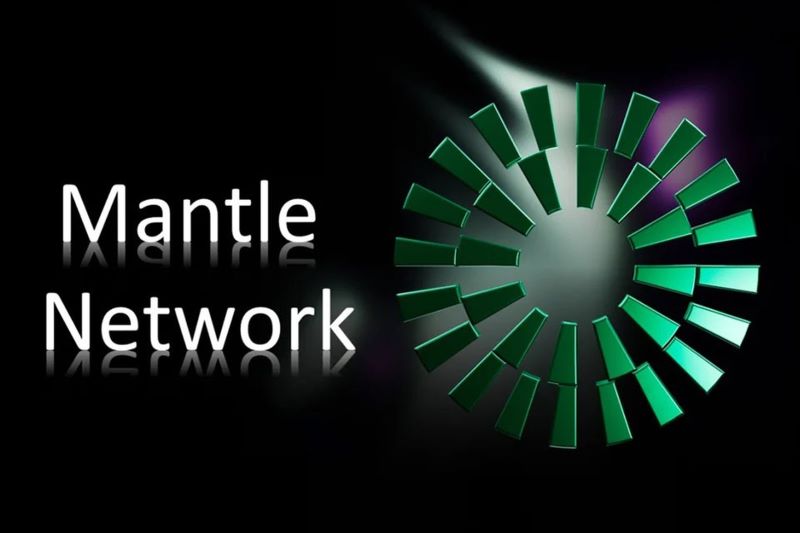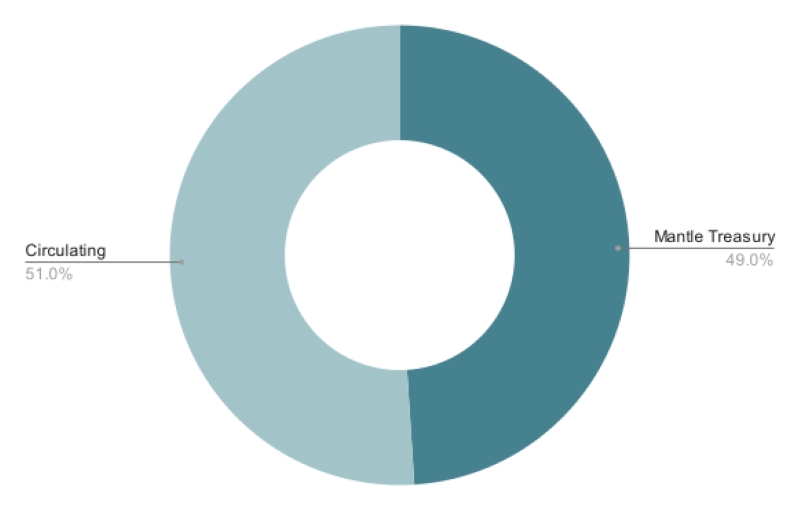Mantle is a prominent project that emerged from BitDAO, one of the largest decentralized autonomous organizations (DAOs) in the market, backed by the Bybit exchange. Mantle continues the mission of BitDAO while developing an advanced Layer 2 solution known as Mantle Network, providing a solid infrastructure for decentralized applications (dApps) on the Ethereum ecosystem.
What is Mantle Network?
Mantle Network is a Layer 2 scaling solution on Ethereum, utilizing Optimistic Rollup technology to enhance Ethereum’s security, scalability, and flexibility. By building on a modular architecture, Mantle optimizes the way transactions are processed, helping reduce costs for users and increasing throughput by compressing transaction data into “bundles” submitted to Ethereum.
One of the unique features of Mantle Network is its use of EigenDA from EigenLayer, enabling cost-effective data storage while maintaining high levels of security and scalability.
Mantle’s Modular Architecture
The modular architecture of Mantle Network addresses several key issues:
- High fees on Layer 2 due to transaction data being posted on Ethereum.
- Limited throughput for Layer 2 nodes relying on Ethereum’s data availability layer.
- Delays in transaction finality, where users often wait up to 7 days before withdrawing assets from Layer 2 due to challenges in traditional Optimistic Rollups.
Mantle introduces Mantle DA, a novel data availability layer that allows service nodes to participate in the network’s economy by staking MNT tokens, ensuring the integrity and availability of transaction data while benefiting from Ethereum’s Layer 1 security.
Unique Offerings of Mantle Network
Mantle Network not only delivers a highly efficient Layer 2 infrastructure but also introduces Liquid Staking Derivatives. This allows users to stake ETH on the Ethereum network through Mantle and receive mntETH, which can be used within the Mantle ecosystem. Users benefit from staking rewards like MEV and network fees.
Mantle’s Modular Chain Design
In its initial mainnet version, Mantle operates as a Smart Contract Rollup with modular data availability. The execution layer of Mantle is compatible with EVM (Ethereum Virtual Machine), where transactions are processed on Layer 2, while consensus and settlement occur on Ethereum Layer 1.
Mantle DA consists of several components interacting seamlessly to store transaction data efficiently:
- Operators: Service providers validating commitments and staking assets as collateral, earning rewards from the network’s fees.
- Dispersers: Entities paying for guaranteed data availability, ensuring the distribution of encoded transaction blocks.
- Challengers: Participants enforcing protocol rules by resolving disputes and penalizing misbehaving operators.
- Smart Contracts: Deployed on Ethereum, these ensure data integrity and enforce the protocol’s Proof-of-Custody mechanisms.
How Mantle Operates
The network operates by receiving user-signed transactions through RPC nodes, processing them via the Sequencer which packages them into blocks. Data is synchronized and validated through Mantle’s innovative Data Transport Layer (DTL), ensuring that the rollup data is securely published on Ethereum Layer 1.
Mantle’s unique Threshold Signature Scheme (TSS) nodes verify and sign transaction batches, ensuring data integrity before submitting it to Ethereum. Additionally, Rollup Verifiers and DA Nodes work in tandem to verify transactions, provide data availability, and ensure the security of the entire ecosystem.
Mantle Network’s Highlights
- Ethereum Security: Layer 2 state transitions are validated by Ethereum’s robust validator network.
- Developer-Friendly Infrastructure: Supports popular smart contract development tools like Truffle, Hardhat, and Solidity.
- Reduced Gas Fees: By leveraging data compression and modular data availability, users enjoy gas fee reductions of over 80%.
- Low Latency & High Throughput: Mantle enables near real-time transaction confirmation with throughput reaching up to 500 transactions per second (TPS).
Roadmap and Future Plans
In May 2024, BitDAO, backed by Bybit, officially merged with Mantle Network following the BIP 21 proposal. This merger combines BitDAO’s governance and financial strength with Mantle’s technical capabilities, aiming to build a unified and powerful digital ecosystem.
The merger also brought significant funding to Mantle, with reserves including over $300 million in stablecoins and more than 270,000 ETH, equivalent to around $485 million. This capital infusion will support Mantle’s expansion and development moving forward.
Tokenomics & Governance
Mantle Network’s native token, MNT, serves multiple roles:
- Governance of the Mantle Network ecosystem.
- Payment for transaction fees and collateral for node operators.
With a total supply of 6.2 billion tokens, MNT does not have a vesting schedule, and its usage is governed by DAO votes.
Mantle Network is poised to be a major player in the Layer 2 landscape with its innovative modular architecture and efficient scaling solutions. As the Layer 2 ecosystem evolves, Mantle’s focus on integrating security, scalability, and data availability positions it to lead the next phase of blockchain infrastructure development. Whether it can keep up with emerging trends like Superchain (Optimism) and Hyperchain (ZKsync) remains to be seen, but Mantle is certainly on the right track.





